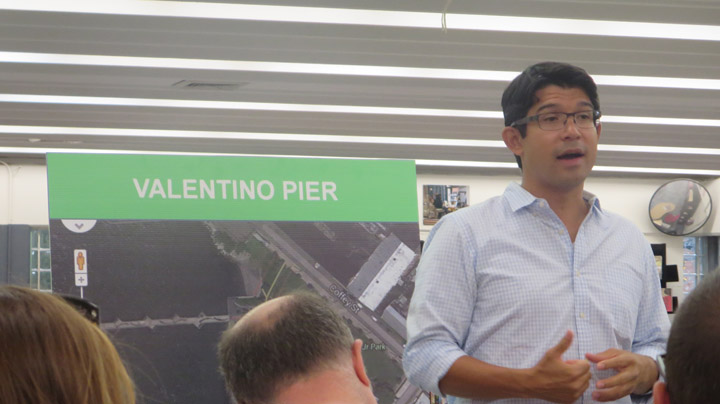I heard a variety of views during recent community meetings and conversations on the proposed comfort station at Valentino Pier Park. Some expressed the strong need for a bathroom in that area while others described issues with the comfort station as proposed. Ultimately, I have decided to pull the funding from this currently proposed project.

The roughly $2 million in New York City Council funds that were set aside for this comfort station during the previous administration will remain in Red Hook for a parks project. The allocation of these funds will be built into our participatory budgeting process. More information on Participatory Budgeting in New York is available at http://www.pbnyc.org, and information on our neighborhood assemblies is available at http://council.nyc.gov/html/pb/events.shtml#district38.
This outcome does not change the fact that we need restrooms near Valentino Pier Park. A diverse group of stakeholders—including small businesses, those that fish off of the pier, kayakers, and Red Hook public housing residents—have underscored the real need for bathrooms in this area. Let’s not forget that.
This comfort station project was inherited by both the New York City Council and the Parks Department. My predecessor had allocated most of the funding to this Red Hook project over several years. My office and the Borough President’s Office each contributed $250,000 to fill a gap in project costs that came from new FEMA requirements post-Sandy. When we stepped in, the assumption was that this idea was borne out of a community process, but what we learned was a real need to press the re-set button and begin a new, truly participatory process. This is a process I am committed to for capital projects and policy making across our district, and I hope you will all join me for the Participatory Budgeting kick-off TONIGHT (Sunset Park High School, 6:30PM), where I will discuss that vision with our community in more detail, and at the community assemblies that follow through the month of November.
Through conversations with the Parks Department, we all learned a tremendous amount about their process, and saw a real responsiveness to our initial ideas about scale and placement of the bathroom with the second proposal presented to us. These are the types of conversations with our City agencies that we want to build upon, and I thank the Parks Department and the many community groups and individuals that participated in this productive conversation.
We heard a number of alternative ideas–from public-private partnerships on sites near the park to a model used in Portland (the Portland Loo) which would allow for restrooms at a much smaller scale. I am exploring some of these alternatives, with neighborhood groups and the Community Board, and the participatory budgeting process is the perfect way to keep this conversation going.
Finally, investments in our community should not be made in a vacuum–we must consider both residents and visitors when we spend capital dollars in our community. This is a principle I am mindful of as we look at our entire capital process, including our participatory budgeting dollars.








